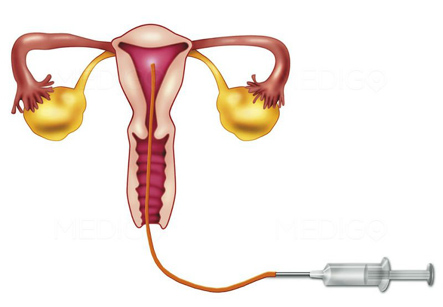Artificial Insemination
Introduction
Artificial Insemination or AI literally means insertion of sperm into a woman’s reproductive tract to achieve a successful pregnancy in infertile couples. Usually the procedure uses a thin long, tube called a catheter. When insemination involves placing the sperm into the woman’s uterus directly, it is called Intra Uterine Insemination or IUI.
Both AI or IUI may use husband or partner’s sperm or donor sperm placed in the woman’s uterus or reproductive tract when she is ovulating. Ovulation refers to the monthly release of an egg from the woman’s ovary.
IUI or AI is chosen in couples who have unexplained infertility. In men who have low quality or counts of sperm, this method may be of use. A problem lying in the mouth of the uterus or the cervix that does not allow the penetration of the sperm may also be an indication for use of this method.
AI may be chosen by women who do not have a male partner. In these cases they may use donor sperms. Iran ranks first in the region in terms of infertility treatment studies

procedure
The male partner is asked to abstain from sexual intercourse for two to five days before the donation to raise the sperm concentration in the donated semen. The collected sperm from the male partner is first washed and concentrated in the laboratory.
If unwashed sperm is used for fertilization, it may lead to severe cramps.
The timing of the operation is timed with the woman’s ovulation. In women who have problems with ovulation drugs may be prescribed to stimulate egg release at the IUI cycle. This ensures that more than one egg is released from the ovary.
The procedure takes a short time in day care and the woman may be allowed to go home after the procedure provided she rests for the rest of the day. Check average costs of Artificial Insemination.
Recuperation and post procedural complications
There may be some amount of cramping during and after the procedure. Twin births and multiple births may also complicate this procedure.
Risk of infection of the uterus due to unclean or used catheters, risk of puncture or rupture of the walls of the uterus during catheter insertion are some other considerations.
Overall AI or IUI is the most cost effective and simple procedure to treat infertile couples. In women who are of older age or who have poor egg quality, severe endometriosis or damage or blockage in the fallopian tubes AI may fail.
Similarly if the male partner has low quality of the sperm the procedure might fail. Other alternatives like in vitro fertilization may be tried if IUI or AI fails.